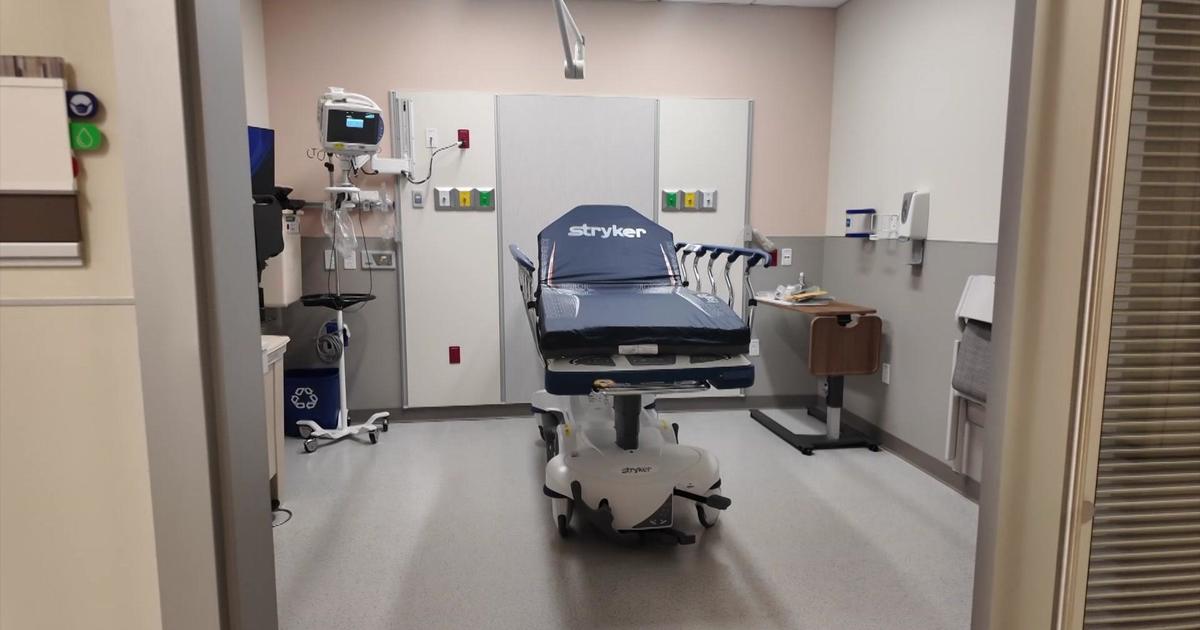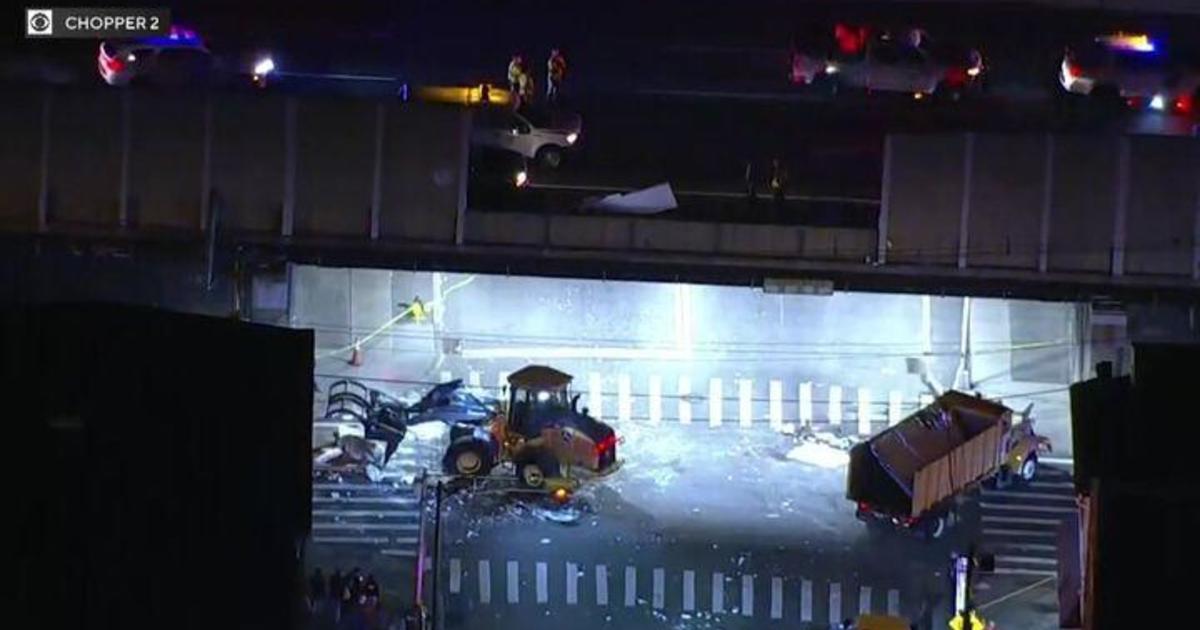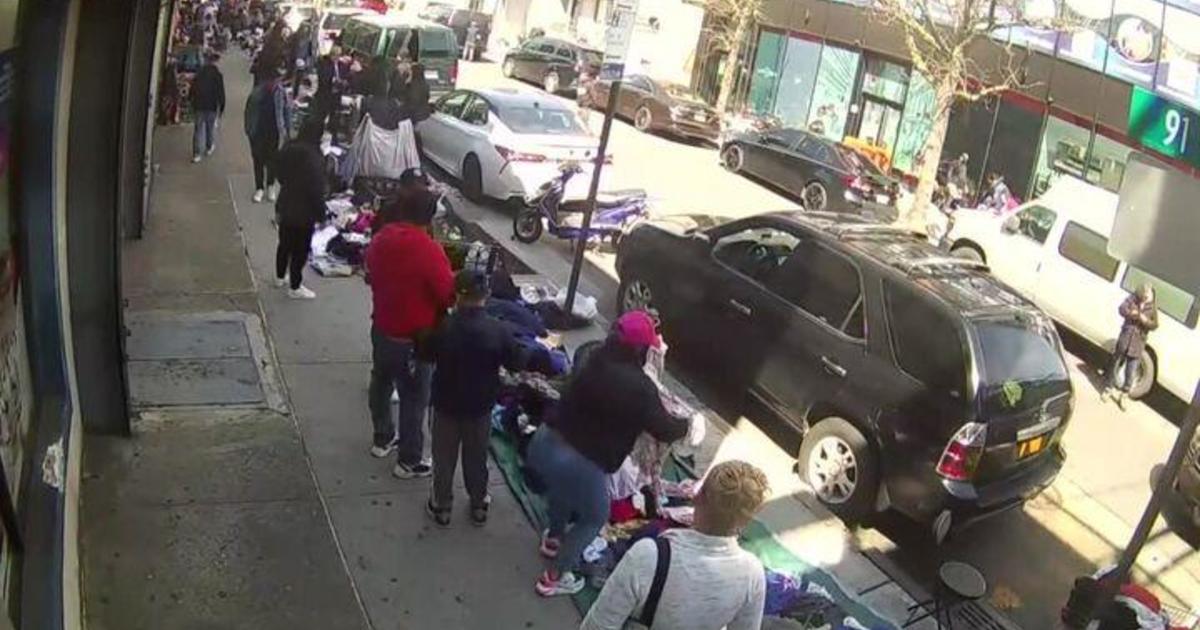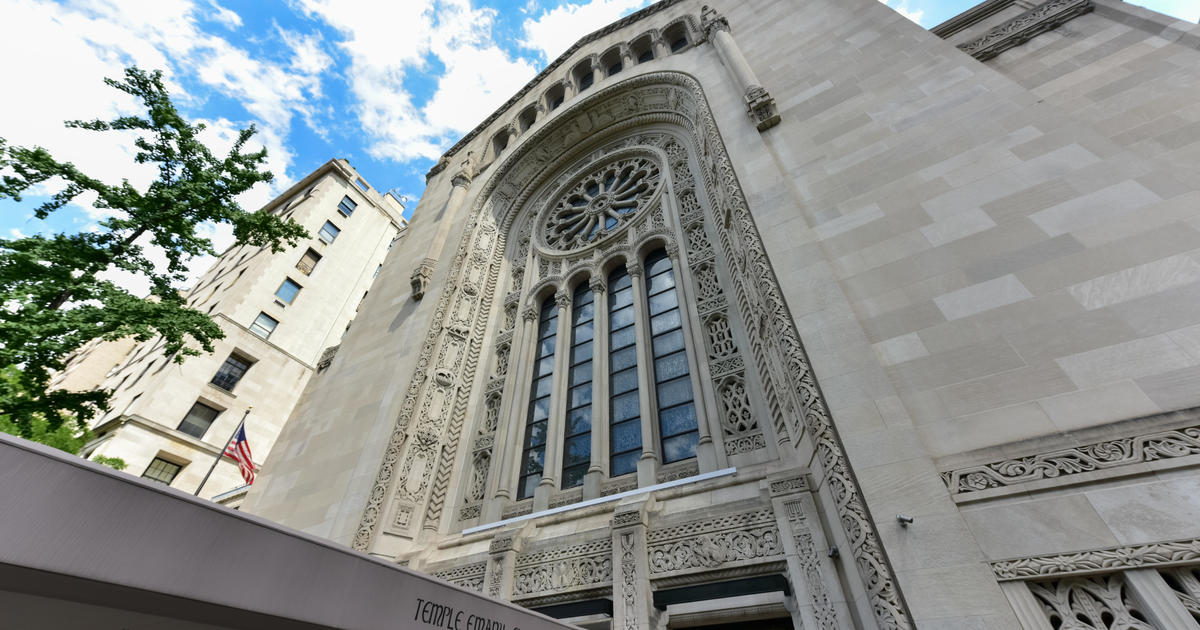Fatal Crashes Put Scrutiny On Booming Low-Fare Buses
NEW YORK (CBSNewYork/AP) -- Two recent fatal tour bus crashes originating from Chinatown has put the spotlight on the fleets of inexpensive buses plying the highways of the Northeast.
Lured by cheap fares, convenient routes and in some cases free wireless Internet, customers queue up daily from curbside pickups in Boston, New York, Philadelphia, Baltimore and Washington.
The industry is in the fifth year of a solid boom, thanks to a new breed of bus service that eschews terminals and thrives on low prices Amtrak couldn't hope to match. But a string of fatal crashes over six months also has prompted calls for tougher regulation.
In September, four people diedafter a Megabus driver missed his exit for a depot in Syracuse, N.Y., and smashed into a low bridge on an unfamiliar parkway. Last Saturday, a bus swerved off Interstate 95 in New York City and was sliced in two by a pole, killing 15. On Monday, a bus drove off the New Jersey Turnpike and struck a bridge support, killing the driver and a passenger.
RELATED: Bronx Tour Bus Crash Driver Has Licenses Suspended | Feds Talking To Driver In Fatal Bronx Bus Crash | Police Seek Answers After N.J. Turnpike Bus Crash That Killed 2 | Police: Tour Bus Crash On N.J. Turnpike Kills 2
The buses were all operated under different circumstances. One was owned by a big corporation with deep pockets.
Another was a casino shuttle. The third was a tiny company serving mostly Chinese immigrants. Still, all three crashes happened in the dark, and on any bus route drivers are susceptible to fatigue.
Brian Lancaster, a driver who cruises a route between Philadelphia and Atlantic City, N.J., said that many times he has felt like pulling over to the side of the road to rest.
"But if you do that, you get yelled at by the passengers and your managers," he said, while waiting for a load of gamblers.
Joseph Schwietermann, professor at the Chaddick Institute for Metropolitan Development at DePaul University, said 2010 was "a year of spectacular growth" in discount bus travel. Overall, ridership on intercity lines was up 6 percent, with curbside discount services accounting for almost all of the growth, he said.
Chicago, where Megabus launched a few years ago, is another thriving hub for discount buses, and service has been spreading to other parts of the country.
Only a few years ago, the main competition to Greyhound, Trailways and Peter Pan for bus routes between big Northeastern cities was a handful of small, fiercely competitive companies that catered almost exclusively to recent Chinese immigrants, with an occasional backpacker or college student.
The catch was that riders had to be comfortable traveling with people who didn't speak English and adventuresome enough to hunt out a ticket agent and pickup location in Chinatown because the buses didn't use traditional depots or terminals.
The new services take everything people liked about the Chinatown buses -- the cheap fares and express routes -- and add corporate gloss. The buses are new, spacious and have Internet access usually not seen on Amtrak.
They don't operate from terminals -- a plus among passengers who would rather shiver or bake on the sidewalk than deal with bus depots that still have a "Midnight Cowboy" feel in some cities.
"We're seeing the demographics really blossom," Schwietermann said. "In the beginning, it was mainly younger people and penny pinchers. Now, it's a really mainstream clientele."
Peter Pantuso, president for the American Bus Association, said the adoption of the Chinatown model by companies like Megabus, created in 2006 by Coach USA, and BoltBus, a joint venture of Greyhound and Peter Pan, is doing for buses what Southwest Airlines did for air travel.
"It has really changed the bus industry," he said.
At the Megabus curbside location in Manhattan, passengers said the allure was simple.
"It's cheap," said Carolyn Hargey, 25, who paid $22 for her round-trip fare from her home in Philadelphia. "If I had enough money to ride Amtrak or travel some other way, I would never take the bus again."
Her traveling companion, Marica Luchetti, 25, said she bought her ticket over the Internet using her phone just a few hours before leaving. She said she began using Chinatown buses because of the low prices and loved them.
"You do have to throw elbows to get on, but they leave on time," she said, before sourly noting that the 6:40 p.m. Megabus she was waiting for had yet to appear.
The big question for travelers is whether those cheap fares -- $10 to $15 for a ride from Boston to New York, compared with $70 or more on Amtrak -- mean the companies are cutting corners on safety.
Industry-wide, statistics suggest that there has been no significant change in the number of people being killed or injured in bus crashes that might be linked to the industry's evolution.
An examination of the safety records of some of the bus lines in the recent New York-area crashes suggests that the situation varies greatly from company to company.
World Wide Travel, the operator of the bus that crashed last week in the Bronx, had a decent safety and inspection record before the crash. With 13 buses, 60 drivers and many years of experience in the charter business, it was a small but not fly-by-night operation.
Still, the company has been criticized for hiring the driver involved in the accident. The driver, Ophadell Williams, served prison time for manslaughter and grand larceny and had apparently also had his driving privileges suspended in the mid-1990s, although that was not reflected in his official driving record because the violations were listed with a different first name.
On the other hand, Super Luxury Tours, the Pennsylvania company in this week's New Jersey wreck, crashed the same bus three times last year, has been cited repeatedly for failing to hire drivers who can speak and read English and racked up a high number of traffic tickets and driver work-hours violations for a company its size, according to the Federal Motor Carrier Safety Administration.
Super Luxury Tours did not respond to requests for comment. World Wide Travel managers have declined interviews but said in a statement that the company was upset by the crash and was cooperating with investigators.
Federal Motor Carrier Safety Administration records show that Megabus, even with the Syracuse crash, did better than the national average on inspections and in safety rankings during the 24-month period that ended Feb. 25. But its 105 buses in the Northeast -- Coach USA said it now operates 135 -- got 20 speeding tickets during the period, compared with 117 for about 1,400 buses operated by Greyhound Lines Inc.
Pantuso said it would be unfair to lump a company like Super Luxury in with an operator like Megabus or BoltBus simply because they offer inexpensive fares and curbside service on similar routes.
Dale Moser, president and chief operating officer of Coach USA, said that when it comes to safety factors, there is no difference between the Megabus service and other bus lines operated by the company.
Drivers are paid the same. They have the same work rules and schedules. The company puts them through the same classroom training sessions and conducts the same annual safety reviews, in which drivers are scrutinized based on video recordings of them driving on the job.
The main difference between Megabus and other branches operated by the company is the age of the buses -- they are mostly brand new.
BoltBus operates under the same Department of Transportation license number as Greyhound, so the safety records of vehicles used in the service cannot be analyzed independently, but company spokesman Timonty Stokes said there are no differences in standards, driver salaries, work rules or maintenance practices.
The new buses serve only the most popular destinations and go point-to-point, rather than operate a network with many stops. Tickets bought far in advance are cheaper, with prices rising as the departure date nears. That gives travelers an incentive to buy earlier, making scheduling more efficient and buses more likely to run at capacity.
By avoiding terminals, they save on user fees and space rental charges.
Noah Kushlefsky, a lawyer with the law firm Kreindler & Kreindler, a leading specialist in transportation safety litigation, said the bus industry as a whole could use safety upgrades.
"The problem is that in order for these companies to make a living, they are operating on very, very low margins. So where are the cost savings? It is in bus maintenance and driver salaries," he said. "There may be some differences, but the same safety issues that you see with the smaller carriers do run through the larger, national carriers, as well."
Jacqueline S. Gillan, vice president of the group Advocates for Highway and Auto Safety, is calling for better safety standards. She urged lawmakers to adopt rules that would require motor coaches of all types to be equipped with seat belts and to have stronger roof-strength standards.
"Motor coach accidents don't happen that often, but when they do happen, they are catastrophic," she said.
The World Wide Travel bus that crashed last week wasn't part of the growing legions of discount carriers working intercity routes. It was chartered in partnership with a ticket agency to carry gamblers from Manhattan to the Mohegan Sun casino in Uncasville, Conn. The bus left on a Friday evening and was returning when it crashed at 5:30 a.m.
Those overnight routes, and similar daytime excursions to casinos, pose a unique set of challenges when it comes to driver fatigue.
Lancaster, who works for a family-owned company he declined to identify, said he and the other drivers at his company work 12-hour days, mostly starting at 6 a.m. When he gets to Atlantic City, he usually eats, then falls asleep in one of the upholstered chairs in the bus depot's lounge or stretches out in one of the more spacious rear seats in his bus for a few hours' sleep.
On Wednesday, he was bleary-eyed as he rested during the seven-hour wait for the return trip.
"Right now I feel like I want go get off this bus and not see another one for a week," he said.
Another driver on an Atlantic City route, Tammy Moore, who works for Bailey Coach of York, Pa., said her company stresses safety above everything else and periodically does spot checks to make sure drivers have adequate rest and time off.
On Wednesday, she was tucking into a plate of meatloaf and mashed potatoes at the Atlantic City bus depot after making the trip from Pennsylvania. She said she regularly has to endure an eight-hour wait between trips. She, too, catches some sleep in the back of the bus.
"It's not like sleeping in your own bed," she said, "but it is rest."
Considering recent tragic crashes involving inexpensive tour buses, would you ride one?
(TM and Copyright 2011 CBS Radio Inc. and its relevant subsidiaries. CBS RADIO and EYE Logo TM and Copyright 2011 CBS Broadcasting Inc. Used under license. All Rights Reserved. This material may not be published, broadcast, rewritten, or redistributed. The Associated Press contributed to this report.)



